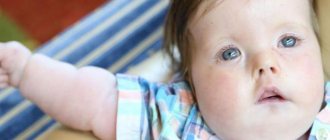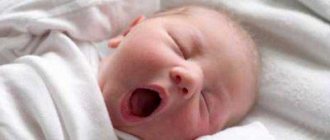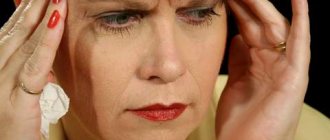1.General information
A large group of chronic systemic (i.e. affecting the entire body as a whole) connective tissue lesions are called rheumatic diseases. Most of these diseases are not entirely clear, or not clear at all, in terms of etiopathogenesis; they have a number of common clinical and pathomorphological features, but also have their own characteristics of the course, dynamics, and outcome.
The most common diseases of this group include rheumatism itself (in the acute period - rheumatic fever), rheumatoid arthritis, as well as Sjögren's disease, the main aspects of which are discussed below.
First of all, it is necessary to clarify the differences and possible difficulties in terminology. Sjögren's disease, or primary Sjögren's syndrome (PSS), is also called in the literature "dry syndrome", "Predtechensky-Guzhero-Sjögren syndrome", "autoimmune exocrinopathy", "autoimmune epitheliitis", "Sjögren's syndrome" (the latter spelling, apparently, is most correct: Henrick SC Sjögren, who first described the disease in 1933, was a famous Swedish ophthalmologist). The difference between the disease and Sjögren's syndrome is only that the secondary syndrome is diagnosed as part of some other rheumatic disease, while pSS (primary syndrome, Sjögren's disease) manifests and develops as an independent pathological process. The symptom complex is the same in both cases.
Regarding the epidemiological, age and regional trends inherent in Sjögren's disease/syndrome, opinions in the available sources differ significantly. Thus, cases of primary detection of Sjogren's syndrome in persons of any gender, race and nationality, place of residence, age (ranging from infancy to old age) are known and described in the literature. At the same time, it has long been established that among those affected, women of mature and menopausal age predominate, but the degree of this predominance is estimated differently: from 8-10-fold to 25-fold. The absolute frequency of occurrence in the general population varies within 0.60.8%; in older age categories this proportion increases to 2.7%.
A must read! Help with treatment and hospitalization!
Diagnostics
During the consultation, the doctor examines the patient, collects anamnesis, and carefully examines complaints. Diagnostic procedures are then determined, which may include:
- Clinical blood test. Reflects a reduced level of hemoglobin and leukocytes, increases the erythrocyte sedimentation rate.
- Blood chemistry. Shows changes in seroglycoids, gamma globulin, and total fibrin.
- Immunological reactions . Determines an increase in immunoglobulins lgM and lgG, a decrease in the number of T cells.
- Slit lamp examination . Helps identify dry mucous membranes of the eye.
- Schirmer test . Calculates the volume of tear fluid produced by the glands.
- ANA profile . Determines the presence of autoimmune pathologies that occur not only in Sjogren's syndrome, but also in other diseases.
- Sialometry . Calculates the volume of fluid produced by the salivary glands.
- Sialography . Assess the condition of the parotid salivary gland duct using a contrast agent and radiography.
- Lip biopsy. Detects changes in the number of lymphocytes in the salivary glands.
- Ultrasound of the glands. Displays the presence of stones in glandular ducts and hypoechoic areas.
Differential diagnosis allows you to accurately identify the cause of the patient’s poor health.
2. Reasons
The etiopathogenesis of Sjogren's disease, that is, the causes and mechanisms of development, remains unknown. Only the autoimmune nature of the disease is generally accepted, while trigger factors that provoke the immune system to attack the tissues of its own exocrine glands (primarily salivary and lacrimal) are the object of intense research and scientific debate. The most discussed and reasoned include viral, genetic and hormonal hypotheses; The influence of psycho-emotional factors is also being studied. Perhaps each of these hypotheses reflects some part of a complex interrelated polyetiology (multi-causality, multi-factoriality).
Visit our Rheumatology page
Sjögren's disease
Contents
hide
1 Sjögren's disease
2 Symptoms of Sjögren's disease 2.1 Diagnosis and treatment of Sjögren's disease
The disease is an autoimmune disease, that is, a person’s immunity negatively affects his body, affects connective tissues, which is accompanied by pain in muscles and joints. In addition, dysfunction of the lacrimal and salivary glands is often observed. Most often, this disease affects women from 25 to 55 years old, however, cases of the disease have been recorded both among the elderly and among children, although quite rarely.
Sjogren's disease especially often develops against the background of other autoimmune diseases, for example, thyroiditis, hepatitis, cirrhosis, rheumatoid arthritis and lupus.
3. Symptoms and diagnosis
It is not for nothing that Sjögren’s disease is called “dry syndrome”: the classic picture of Sjögren’s disease includes two obligate symptoms that are mandatory for diagnosis - xerophthalmia (dry eyes) and xerostomia (dry mouth); For a secondary syndrome, the presence of another, previously manifested systemic connective tissue disease is required.
Insufficient hydration of the eyeballs, caused by lymphoid infiltration of the lacrimal glands, leads to the development of dry keratoconjunctivitis (inflammation of the cornea and conjunctiva, sometimes ulcerative) with corresponding symptoms.
Constant drying out of the oral mucosa causes a number of serious dental disorders and leads to problems with food consumption.
Optional symptoms are very diverse: photosensitivity (pathological hypersensitivity of the skin to sunlight) with an erythematous rash in open areas, joint-muscular pain and swelling, cheilitis (inflammation and cracks on the lips and in the corners of the mouth), gastrointestinal disorders, sexual dysfunction in women (since not only salivary and lacrimal glands are affected, but also other exocrine glands, including those responsible for moisturizing the vagina), allergic reactions, dry bronchitis and other respiratory diseases, renal pathology, vasculitis (inflammation of blood vessels), damage to the central nervous system and etc. The most dangerous complications of Sjogren's disease/syndrome include oncological processes (usually lymphomas or lymphosarcoma), the likelihood of which increases by more than 40 times with this disease.
Diagnosis is based on the results of studying the anamnesis, clinical picture and dynamics, as well as on data from ophthalmological, dental, oncological, and endocrinological examinations. Additionally, imaging diagnostic methods and biopsy of affected tissues are prescribed. However, a multifaceted laboratory blood test is critical.
About our clinic Chistye Prudy metro station Medintercom page!
Forecast
Sjögren's syndrome can damage vital organs with a transition to a stable state, gradual progression, or, conversely, long-term remission. This behavior is also typical for other autoimmune diseases.
- Some patients may have mild symptoms of dry eyes and mouth, while others develop serious complications. Some patients are completely helped by symptomatic treatment, others have to constantly struggle with deterioration of vision, constant discomfort in the eyes, often recurrent infections of the oral cavity, swelling of the parotid salivary gland, difficulty chewing and swallowing. Constant loss of strength and joint pain seriously reduce the quality of life. In some patients, the pathological process involves the kidneys - glomerulonephritis, leading to proteinuria, impaired renal concentrating ability and distal renal tubular acidosis.
- People with Sjögren's syndrome have a higher risk of developing non-Hodgkin's lymphoma compared to healthy people and people with other autoimmune diseases. About 5% of patients develop some form of lymphoma.
In addition, it has been found that children of women with Sjogren's syndrome during pregnancy have a higher risk of developing neonatal lupus erythematosus with congenital heart block.
4.Treatment
There is currently no etiopathogenetic treatment. Palliative therapy is prescribed - salivary stimulants, artificial tears, as well as, as necessary, non-steroidal and hormonal anti-inflammatory drugs, antibiotics and other drugs for symptomatic treatment.
With timely initiation of treatment, the prognosis is favorable; if it is delayed, it is questionable, since the autoimmune process that progresses over a long time leads to the development of severe complications from a number of key body systems. In such cases, disability often occurs, and certain life-threatening conditions may develop.
Treatment
There is no standard treatment for Sjögren's disease, so doctors select supportive and symptomatic treatments. For example, to eliminate dryness of the mucous membrane, medications are selected that protect and moisturize the cornea. These include Gilan, which contains highly purified sodium hyaluronate. It creates a protective film on the surface of the eyes, which protects the mucous membrane from drying out, inflammation or irritation. In some cases, doctors select soft contact lenses.
To reduce inflammation of the lacrimal glands, the doctor prescribes drugs with cyclosporine. You can get rid of dry mouth with the help of medications that stimulate the flow of saliva. To normalize saliva production, medications with calcium are selected, and you need to drink water during meals. Since the syndrome accelerates the development of caries, it is necessary to carry out careful oral hygiene and regularly consult a dentist.
In some cases, pancreatic insufficiency is observed, for the treatment of which medications with enzymes are selected. If gastric secretory insufficiency is present, replacement therapy is used.
If the patient exhibits musculoskeletal symptoms, they are treated with nonsteroidal anti-inflammatory drugs. To stop the inflammatory process in the parotid glands, doctors select antifungal drugs and prepare a course of antibiotics.
In the later stages, there are serious complications that require the use of immunoglobulins, immunosuppressants, and corticosteroids. When glomerulonephritis, ulcerative necrotizing angiitis and other pathologies appear, clinical recommendations include plasmapheresis and hemosorption.
Treatment of Sjögren's syndrome in Belgium
B-cell depletion is a promising form of therapy that is being used in clinics in Belgium to treat patients with Sjögren's syndrome. The effect is achieved using anti-CD20 or anti-CD22 therapy.
Rituximab (anti-CD20) is a monoclonal antibody that targets the CD20 antigen found on B cells. The drug's mechanism of action includes complement-dependent cytotoxicity, growth inhibition, and B cell apoptosis. Reducing the number of B cells reduces the amount of autoantibodies produced and therefore the effects of the disease. It has been shown to be effective in reducing sicca symptoms and normalizing salivary gland function.
A prospective study of 78 patients with primary SS treated with rituximab also reported significant improvement in extraglandular manifestations as measured by EULAR (European League Against Rheumatism). Several small studies of rituximab have found improvement in arthralgia, regression of parotid swelling, and improvement in immune thrombocytopenia.
Leflunomide/Hydroxychloroquine combination therapy resulted in significant reductions in pathological scores and was not associated with serious side effects in a small phase 2a randomized clinical trial in the Netherlands. This served as the basis for the approval of a comprehensive treatment regimen in clinics in Belgium.
Also, extensive trials of other most promising treatment methods are being carried out in medical centers in Belgium, such as:
- anti-CD22 agents;
- anti-BAFF agents;
- anti-IL-1 agents;
- interferon type 1
- anti-T cell agents
Prognosis and possible complications
Sjögren's syndrome does not pose a serious threat if treated correctly, but its manifestations can complicate a person's life. It is necessary to eliminate symptoms in a timely manner and carry out supportive procedures so that a person does not become disabled due to severe complications. Only through complex treatment can it be possible to slow down the destruction of connective tissue and maintain a person’s ability to work.
Complications and consequences of Sjogren's syndrome:
- secondary infection;
- mumps;
- sinusitis;
- blepharitis;
- bronchitis;
- bronchopneumonia;
- tracheitis;
- diabetes;
- kidney failure;
- thyroid dysfunction;
- circulatory disorders in the brain.
Modern view of Sjögren's syndrome in children
Sjögren's syndrome is a rare disease in childhood. There is virtually no information about its prevalence in children. In Japan, according to S. Fujikawa et al. (1997), the incidence of Sjogren's syndrome is 0.04 per 100 thousand children.
Described in the literature since the 50s. XX century observations cover only a few dozen people, mostly adults. One of the largest studies by AA Drosos et al (1997) described the course of Sjögren's syndrome in 16 children.
The etiology of the disease is unknown, but retroviruses are of particular importance. The pathological process is assumed to be genetically determined. Autoimmune disorders are considered to be the basis of the disease development mechanisms.
According to modern views, Sjögren's disease, or primary Sjögren's syndrome, is a systemic autoimmune disease characterized by lymphoplasma cell infiltration of secreting epithelial glands with the most common lesions of the salivary and lacrimal glands. There are primary and secondary Sjögren's syndrome. Primary Sjögren's syndrome is an independent nosological entity, which in the classification of rheumatic diseases used (1988) is included in the group of diffuse connective tissue diseases. Secondary Sjögren's syndrome accompanies other autoimmune diseases, primarily rheumatic diseases.
The disease is verified in accordance with accepted criteria: dry keratoconjunctivitis (decreased lacrimalization after stimulation - Schirmer test, 10 mm/min; staining of the epithelium of the conjunctiva and cornea with rose bengal or fluorescein with subsequent biomicroscopy), chronic parenchymal parotitis (cavities >1 mm with sialography; reduction salivation after stimulation with ascorbic acid <2.5 ml/5 min; focal-diffuse, diffuse lymphoplasma cell infiltration in biopsy samples of the salivary glands of the lower lip), laboratory signs of a systemic autoimmune disease (rheumatoid factor, antinuclear antibodies, Ro-/La-antibodies).
Sjogren's disease is classified by determining the characteristics of the course (subacute and chronic), stage of development (initial, severe and late), degree of activity (minimal, moderate and high) and the nature of clinical and morphological changes.
The basis of this study was observations of 17 children aged 7 to 16 years who were undergoing inpatient treatment at the clinic over the past 15 years.
Our data showed that the majority of patients are girls (≈80%). The first signs of the disease usually appear in preschool or primary school age. The onset of Sjogren's syndrome is relatively stereotypical, in some children it is hardly noticeable, and is associated with symptoms of recurrent mumps. Secondary Sjögren's syndrome in childhood most often occurs in the presence of systemic lupus erythematosus or juvenile rheumatoid arthritis.
The nature of clinical manifestations in a child, even with fairly pronounced damage to the salivary and lacrimal glands, is different both in the range of symptoms and in their severity. Children rarely complain of a feeling of dryness in the oral cavity, including in the presence of pronounced sialographic and histological (examination of a biopsy of the minor salivary glands) data; some experience intermittent and minor sensations of “sand in the eyes.”
The so-called “hamster” appearance observed in adults is not typical for children. In some cases, quite pronounced dryness of the skin of the hands and feet attracts attention. Obvious changes are usually not detected when examining the oral mucosa, but quite pronounced dental caries may occur.
One of the striking components of the clinical picture of the disease, although nonspecific, is damage to the musculoskeletal system in the form of arthritis, as well as myalgia and arthralgia. Arthritis can be either persistent, with fairly pronounced exudative manifestations and the formation of contractures, or unstable. In this case, the explanation for persistent, often generalized joint damage with the formation of contractures is the presence of juvenile rheumatoid arthritis in the child, which is combined with Sjögren's syndrome (secondary Sjögren's syndrome). Meanwhile, unstable arthritis may be a manifestation of Sjögren's disease or systemic lupus erythematosus with Sjögren's syndrome.
In children with Sjögren's disease, there are no clear signs of damage to internal organs. However, in the presence of Sjögren's syndrome against the background of systemic lupus erythematosus, manifestations such as nephritis, pleurisy, and pericarditis may occur.
Particular caution should be exercised regarding the possibility of developing a lymphoproliferative process, which often occurs in adults. In childhood, such situations are not known, however, at the slightest suspicion, additional research and discussion of the situation with an oncologist is necessary.
With an adequate comprehensive dental examination, which necessarily includes sialography of the parotid glands and a biopsy of the minor salivary glands, quite specific changes are revealed, which, like ophthalmological signs, have diagnostic significance. In children, disorders can be detected at any stage - from initial to late - depending on the degree of damage to the salivary glands. In fact, all patients exhibit ophthalmological changes in the form of subjective disorders (a feeling of “sand in the eyes”, a feeling of fatigue), objective signs of keratoconjunctivitis sicca of varying severity.
The most significant laboratory indicators of the disease are high and persistently elevated values of rheumatoid factor, antinuclear antibodies, erythrocyte sedimentation rate, and γ-globulins.
Researchers studying Sjögren's syndrome in children do not have a uniform approach to treating this condition. In our practice, we use a method of treating adult patients modified for children. The basis of therapy is glucocorticoids (usually at an initial dose of no more than 0.3 mg/kg/day) in combination with chlorambucil (at a dose of 0.5–1.0 mg/day). This complex has been used for a long time, for several years. In addition to this, local ophthalmological (“artificial tears”) and dental therapy (oral hygiene, caries treatment) are used.
In order to form a more clear picture of Sjögren's syndrome, which develops in childhood, we supplement the above information with extracts from patient medical histories.
Example 1. An 8-year-old girl diagnosed with juvenile rheumatoid arthritis was admitted to our clinic for the purpose of correcting her therapy.
The first signs of juvenile rheumatoid arthritis were detected at the age of 5 years (generalized lesions involving the cervical spine) with frequent relapses. Upon further questioning, it turned out that since the age of 3, the child has had episodes of swelling in the parotid areas 1–3 times a year, which doctors regard as recurrent mumps.
During physical examination, symmetrical changes in large and small joints of the extremities, limited function of the cervical spine, and temporomandibular joints were noted; Also noticeable was the rather pronounced dryness of the skin. In peripheral blood: ESR – 30 mm/h, g-globulins – 44%, rheumatoid factor – 1/1280, antinuclear antibodies – 1/80 (speckled glow). Considering the anamnestic information about recurrent swelling in the parotid areas and the high value of rheumatoid factor, the child was referred for consultation to a dentist and ophthalmologist.
As a result of all the studies conducted, it was established that the girl suffers from juvenile rheumatoid arthritis (articular form, polyarticular variant, radiological stage II, functional deficiency I–II) with Sjögren's syndrome (chronic parenchymal parotitis, severe stage, xerostomia 1st degree; dry chronic keratoconjunctivitis, hypolacrimia 1st degree).
Therapy was prescribed: prednisolone (2.5 mg/day), chlorobutine (0.5 mg/day), lacrisin (“artificial tear”).
As a result of follow-up, carried out over 4 years, a gradual decrease in the manifestations of the disease was noted: arthrological (decreased frequency and severity of relapses of polyarthritis, improved function), dental (lack of swelling of the parotid salivary glands, increased salivation, reduction of changes in sialograms of the parotid salivary glands and biopsy samples of minor salivary glands), ophthalmological (reduction of manifestations of keratoconjunctivitis sicca, increase in lacrimation), autoimmune indicators (normalization of rheumatoid factor and antinuclear antibodies).
Example 2. A 14.5-year-old girl, diagnosed with Sjögren’s disease, subacute course, late stage, activity of the 2nd degree, with damage to the salivary glands (chronic parenchymal parotitis, late stage; hypofunction of the salivary glands of the 3rd stage), nasopharynx (subatrophic rhinopharyngitis), eyes (2nd degree of dry keratoconjunctivitis, hypofunction of the lacrimal glands 2nd degree), joints (arthralgia), gastrointestinal tract (gastritis with secretory insufficiency).
The child's mother's pregnancy proceeded without complications. The girl grew and developed normally. There was no significant family history available.
Until the age of 7, frequent conjunctivitis and swelling of the parotid glands were noted. From the age of 10, there were complaints of constant dry mouth and the need to drink dry food. At school age, exacerbations of mumps occurred 4–5 times a year.
During examination in the children's department of the Institute of Rheumatology of the Russian Academy of Medical Sciences, the patient complained of dry mouth, throat and nose, absence of tears, while no disturbances in her general condition were noted. The skin is normal. Endoscopy - widespread gastritis, normchlorhydria. Examination by an ENT doctor: chronic subatrophic rhinopharyngitis. Plain radiography of the chest organs: slight enhancement of the pulmonary pattern in the hilar region; otherwise the internal organs are without pathological abnormalities. Leukocytes - 4.2 x x109, ESR - 20 mm/h; rheumatoid factor - 1/160, ANF - 1/32 (sp), moderate increase in g-globulins, antibodies to Ro, La, RNP - negative. Examination by an ophthalmologist: dry keratoconjunctivitis (epithelial corneal dystrophy of the 2nd degree), hypolacrimia of the 2nd degree. Dental examination: the right parotid gland is slightly enlarged; saliva is not secreted from the ducts of the left parotid and submandibular glands; the oral mucosa is hyperemic; the amount of free saliva in the oral cavity is reduced; number of minor salivary glands - 11; there are carious teeth, including those with cervical localization, the tooth enamel is dull; The sialogram shows changes characteristic of parenchymal mumps. During therapy with prednisone, chlorbutin, and symptomatic drugs, positive dynamics were noted, expressed in the reduction and disappearance of exacerbations of mumps, normalization of well-being, leveling of complaints of dry mouth, and improvement of vision.
As can be seen from the given case histories, the main signs that make it possible to identify patients suffering from Sjögren's syndrome can be considered recurrent swelling of the parotid salivary glands, increased values of ESR, γ-globulins, and rheumatoid factor. All this is the basis for conducting an in-depth examination, including dental and ophthalmological.
The data obtained by us and other researchers allows us to conclude that the problem of Sjogren's syndrome in relation to the pediatric population of patients is more relevant than is currently believed. Difficulties in recognizing Sjögren's syndrome in children may be associated both with the clinical features of the disease in childhood, the large compensatory reserves of the child, and with insufficient awareness of doctors regarding this disease.
Subsequent observations will provide an opportunity to more fully describe the clinical picture of Sjogren's syndrome in children, make the necessary adjustments to the existing diagnostic criteria (adapting them in relation to childhood), clarify the tactics of managing the disease and, finally, establish the significance of Sjogren's syndrome developing in childhood.
N. N. Kuzmina, Doctor of Medical Sciences, Professor D. L. Alekseev, Candidate of Medical Sciences V. I. Vasiliev, Candidate of Medical Sciences M. V. Simonova, Candidate of Medical Sciences T. N. Safonova
Institute of Rheumatology, Moscow
Forms and stages of Sjögren's syndrome
There are subacute and chronic forms of the disease. For subacute, extraglandular symptoms are more typical: rheumatological disorders, vasculitis and corresponding skin lesions, malfunctions of the kidneys and PNS. Chronic is characterized by a predominance of glandular abnormalities: improper functioning of the glands, diseases of the ENT organs.
According to the severity of symptoms, early, severe and late stages are distinguished. Negative changes in connective tissue occur with varying intensity. With a high degree of intensity, symptoms of mumps, stomatitis, conjunctivitis and arthritis are noted. In severe cases, generalized lymphadenopathy (enlarged nodes of the lymphatic system) and hepatosplenomegaly (enlarged spleen and liver) are diagnosed. Based on the results of laboratory tests, a violent inflammatory process is revealed.
Moderate intensity is expressed in a decrease in the immune response, there is extensive destruction of the epithelium of the glands. Low intensity causes xerostomia (saliva deficiency), keratoconjunctivitis (inflammatory damage to the conjunctiva and cornea) and gastritis (inflammation of the stomach lining).










